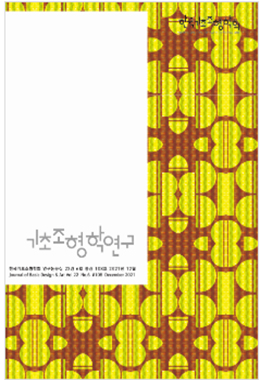본 연구는 다양한 마이크로 모빌리티 중에 어느 폼팩터가 가장 효율적이고 이상적인 디자인인가에 대한 고민에서 시작되었다. 최근 EV 전동화 플랫폼의 보격화에 맞추어 많은 모빌리티 기업들은 신사업 비즈니스 제안을 하고 있다. 개인의 이동이 아닌 짐의 이동이 중심인 카트를 기반으로 마이크로 모빌리티를 제시하고자 한다. EV 카트의 적재성과 사용성을 고려하여 정말로 필요한 폼팩터를 연구하고 구체화된 디자인을 제안하는 것이 이 연구의 목적이다. 서론은 이론적 배경으로써 마이크로 모빌리티에 대한 조사와 제품 제작의 복잡성을 해결하고 다양한 니즈에 맞추어 폼팩터의 전개가 가능한 모듈러 아키텍처(Modular Architecture)에 대하여 이해 한다. 본론에서는 카트의 종류 및 사용성을 연구하며 구조적 폼팩터를 분석하여 EV 카트 디자인 제안에 필요한 요인을 연구한다. EV 플랫폼 안에서의 적재 가능 공간을 위한 패키지 레이아웃을 분석하고 적재공간 안에서의 구조화가 가능한 폼팩터를 찾는다. 연구를 토대로 모듈러 아키텍처에 기반하여 이동과 적재 중심의 메인 모듈 디자인과 다목적성과 활용성을 고려한 서브 모듈 디자인으로 나누어 EV 카트 디자인을 제안한다. 마지막으로 본 연구의 디자인 제안에 대한 파일럿 인터뷰를 진행하여 실제로 사용성에 있어서의 구조적 장/단점을 파악한다. 결론에서는 팬데믹 이후에 불특정 다수가 만질 수밖에 없는 도크리스(Dockless) 방식이 가진 퍼스트-라스트 마일 모빌리티로써의 한계성을 기술하고 공유가 아닌 차량 적재를 통한 소유형 빌트인 방식의 장점과 시장성을 제시한다. 본 연구는 아직까지 개발이 되지 않은 마이크로 모빌리티의 새로운 시장에 대한 차별화된 개념의 디자인 제안을 하고자 하는 것에 시사점을 가지고, 이번 연구를 통해 기업에서 새로운 시장성에 관한 참고 데이터로 활용되어 제품 제작의 복잡성을 해결하고 다양한 니즈에 맞추어 다목적 서브 모듈을 통한 대응도 원활히 될 수 있기를 기대한다.
This study began with a concern about which form factor is the most efficient and ideal design among various micro-mobility. In line with the recent expansion of the EV electrification platform, many mobility companies are making new business proposals. This study present micro-mobility based on a cart that focuses on the movement of luggage. Considering the loadability and usability of EV carts, the purpose of this study is to study the form factors that are needed and propose a concrete design. As a theoretical background, the introduction, the modular architecture can solve the complexity of micro-mobility’s product fabrication and deploy form factors to meet various needs. In the main part, the types and usability of carts and structures of form factors are studied, and analyzed the factors necessary for EV cart design proposal. It analyzes the package layout for the loadable space within the EV platform and finds a form factor that can be structured within. Based on the modular architecture, EV cart design is proposed by dividing it into a main module design and the sub-module design considering multipurpose and usability. Finally, a pilot interviews based on the design proposal is identify the strengths and weaknesses in practical usability. In conclusion, we describe the limitations of the Dockless method as first-last-mile mobility, which is inevitably touched by an unspecified number of people after the pandemic, and present the advantages and marketability of the owned built-in method through vehicle loading rather than sharing. This study has implications for making a design proposal with a differentiated concept for a new market for micro-mobility that has not yet been developed, and it is hoped that this study will be used as a reference data for new marketability in companies to solve the complexity of production and facilitate response through multi-purpose submodules.


